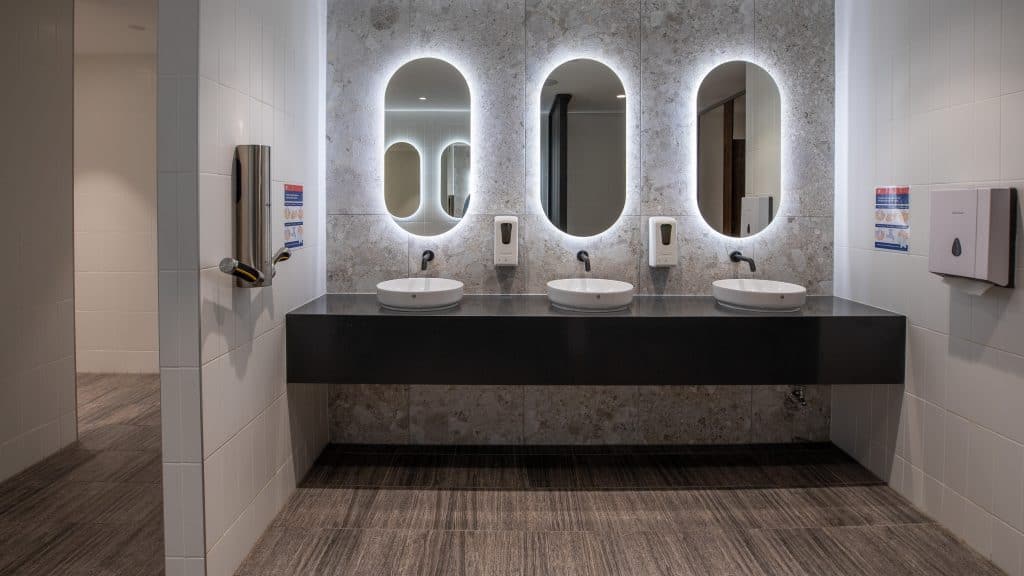
News
Hygiene awareness propels the move towards ‘touchless’ hospitality
Growing consumer interest for hygiene and safety are propelling hospitality venues towards physically ‘touchless’ environments.
Renowned for delivering exceptional buildings, Paynter Dixon is working closely with clients across NSW to create future-fit facilities in a post-COVID landscape. Fast adopters see the benefits as trifold: preserve trust with traditional patrons, market to a new generation, and harness operational efficiencies.
“This investment is creating a marketable point of difference as venues keep pace with changing consumer expectations,” says Andrew Neagle, Paynter Dixon’s Strategic Development Lead in Hospitality.
“How do you create high-touch service while removing physical touch points? Achieving this end-to-end customer experience is a key challenge of 2022.”
Technology is playing a large role. Digital apps are increasingly used to order food and beverages, facilitate membership and conduct gaming. More resources are also going towards upskilling and equipping staff in expanded roles which monitor and stamp out health risks.
No stone (or space) is left unturned as hygiene-centric thinking informs the design of indoor and outdoor environments.
Bathrooms send a message
Bathrooms and toilets have championed touchless functionality in recent years. Alongside doorless entry, motion detector senses are increasingly commonplace for soap dispensers, running water and hand dryers. As highly visible statements of hygiene, venues realise these facilities can now influence the consumer decision on where to go out.

Air is a marketable “commodity”
Air quality is perhaps the defining priority as venues explore all avenues for harnessing fresh air. While this may involve a large investment in technology, many venues are finding budget-friendly measures at their fingertips, including the adaption of existing systems.
For instance, Paynter Dixon is working with a client to reconnect a heat recovery wheel that sat dormant in the recycled air system. The wheel salvages heat from used building air and transfers to incoming, fresh air. Once reinstated, the venue will circulate 100 per cent fresh air through the system.
Flexibility also underpins design. Moving away from sealed and rigid indoor environments, venues are creating hybrid spaces with greater scope for harnessing natural ventilation and sunlight. For Club Parramatta, formerly Parramatta RSL (pictured above), Paynter Dixon oversaw design and construction of a multi-purpose three-storey building.
In addition to outdoor dining and recreational areas, the facade discretely locates glass louvre windows above eye level. Fresh air is circulated internally, supplementing air conditioning – and saving dollars in the process.
Rise of the hybrid space
In recent years Paynter Dixon has worked with Cowra Services Club to evolve facilities for a new generation, refurbishing lounges and creating an outdoor terrace. The next stage of work will see a function area converted to a bar and servery with a retractable roof and operable glass wall.
Whether creating the appeal of chic rooftop bar, or warmth of a family pizzeria, the future venue will configure a range of open and enclosed spaces within the existing floorspace. Versatile – yet efficiently aligned with staffing requirements.
In 2021, NSW Department of Planning streamlined the approval process, encouraging Clubs to convert outdoor areas and carparks into hospitality areas. While an outdoor open floorplan teases a fast conversion, venues should factor all aspects – including the additional servicing and maintenance requirements – into the planning process.
Andrew stresses the importance of enlisting the right expertise from the outset. “Our partnership approach to project delivery is built on high levels of trust and a track record of solving challenges that inevitably arise.”
Contact Andrew Neagle today on Andrew.Neagle@paynterdixon.com.au.
Categories
Related Articles
-
CODA tower crane dismantled
December 02, 2024
-
110 Year Anniversary: narrated history
November 14, 2024
-
110 Year Anniversary: future roads of innovation
October 21, 2024
-
110 Year Anniversary: James and Garry Boyd reflect on success
June 06, 2024
-
Empowering people and projects with standards
May 31, 2024